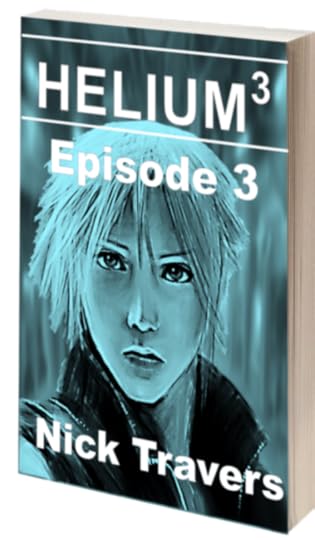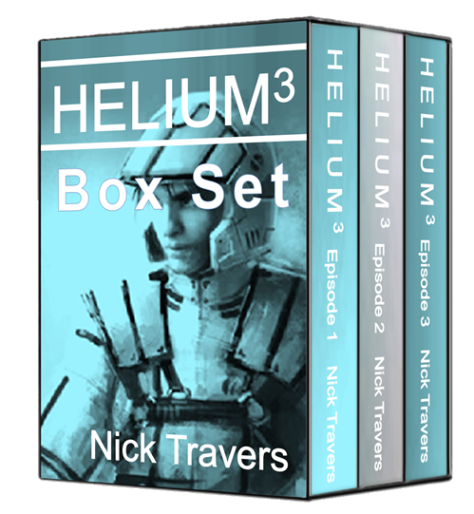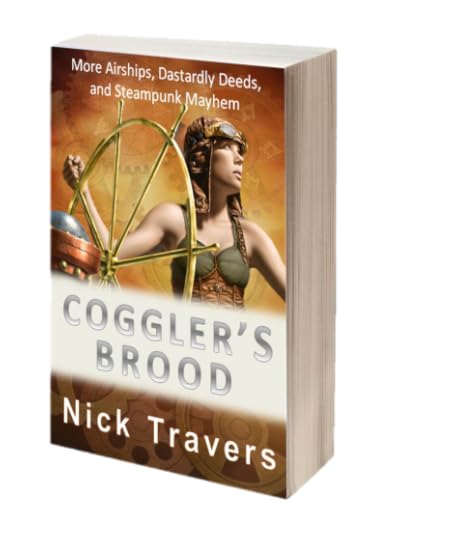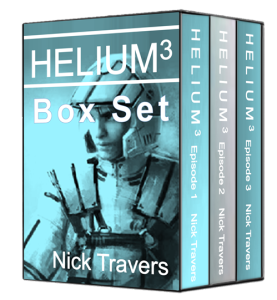Nick Travers's Blog, page 10
April 4, 2015
Steampunk Dystopian Adventure – the countdown begins
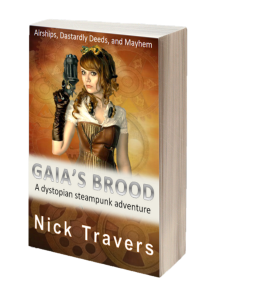 Gaia’s Brood
Gaia’s BroodA week ago, I received back the manuscript for Gaia’s Brood from my editor and I have now completed the final edit.
I’ve spent the last few days formatting the master document for ebook and paperback publishing – it is all very exciting.
All I need to do now is load up the manuscript for the pre-launch publicity and kick off the pre-launch marketing.
Official publication date is the 25th April 2015
Here’s the marketing strategy I have decided to pursue:
Two weeks prior to the publishing date, offer free pre-launch ebook copies in return for publication day Amazon reviews. The sign-up forms, with auto email marketing reminders, are already prepared on MailChimp and I have loaded them onto the Free Stuff page of this website. You can sign up here for your free pre-publication copy of Gaia’s Brood.
For the first two weeks after publication offer the ebook at $1.99 (not using Amazon KPD), and offer the paperback at cost price.
Two weeks after launch, offer the ebook and paperback for the full price of $4.49.
During the whole six week period, upload all the pre-prepared website articles, promote the book trailer video – you can view on the right it at the top of this page, and the 50% associate deal.
And if none of that shifts a stack of books, carry on writing the sequel, Coggler’s Brood and try again.
Wish me luck.

March 6, 2015
#DearWriterlyMe
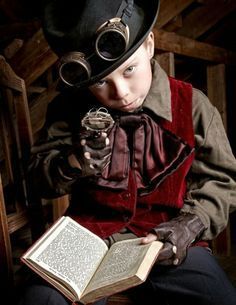
The #DearMe trending on Twitter caught my attention the other day. This was part of Women’s Day, where women wrote letters of advice to their younger selves.
This got me thinking, what advice would I give to my younger writerly self?
1. Don’t let everyone tell you that bad writing and atrocious spelling means you cannot write. Dyslexia may be a problem, but computers will largely get you over these hurdles (cannot remember the last time I wrote anything, other than a card, by hand).
2. Learning to tell a good story is never wasted, and is the hardest thing about fiction writing.
3. Take up writing as a serious hobby much earlier – you are good at it.
4. Read only those books / article on writing that make a real difference (I’ll send you a reading list through the time machine).
5. Good characters are the key to creating great writing.
6. Practice writing lots – one day it will save your life.
7. Don’t go to the 2005 Winchester Writing Conference, you were nearly too late for that important thing. I know it was good, but save it for another year. What were you thinking?
8. The internet will change everything. Self publishing will no longer be just a vanity project, but a valid career move, where success depends not on luck, but on hard work. Get on the band-wagon early.
9. Outsource what you cannot do yourself.
10. Twitter is fantastic, why did you ignore it for so long?
11. Don’t bother with Facebook, you don’t ‘get’ it.
12. Love Steampunk. I know it sounds geeky and they dress weird, but it’s the story world and audience you are craving.
So that is twelve things I would have liked to hear when I was just starting out as a writer. What about you? What advice would you give to your writerly self? #DearWriterlyMe.

January 27, 2015
Writing Workshop – Believable Heroes and Villains
The worst and best of humanity is yet to come.
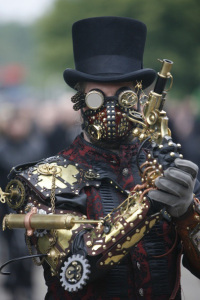 Today, is International Holocaust Memorial day—70 years since the NAZI concentration camp of Auschwitz was liberated. It reminds us all of the depths to which human depravity can plunge, but it also reminds us of the great sacrifices some people will make for others—the best of humanity.
Today, is International Holocaust Memorial day—70 years since the NAZI concentration camp of Auschwitz was liberated. It reminds us all of the depths to which human depravity can plunge, but it also reminds us of the great sacrifices some people will make for others—the best of humanity.
How as writers do we capture this in our characters? The easy answer is to portray our protagonists as the best of humanity and our villains as the worst, but that results in flat, two-dimensional characters, in which no one, except younger children, are interested.
The reality, is that everyone has the ability within themselves to both plumb the depths of humanity and to soar to the heights. The film Schindler’s List is a great example of the internal conflict within human nature. Here is a man who does good things for bad reasons—this is the sort of character that keeps our readers glued to the text, furiously turning pages.
The twentieth century was probably the worst yet in terms of human depravity—mainly as a result of despotic atheistic regimes killing their own people in ever larger numbers. Some may view that last statement as controversial, but the facts speak for themselves.
As our technical ability to easily kill large numbers advances, I believe that even more shocking atrocities will be committed in future centuries—though I hope and pray I am wrong. The worst and best of humanity is yet to come (Nick Travers 2015). This is a statement I make in the forward of the novel I am currently working on, ‘Coggler’s Brood,’ because I want to explore some of these themes in the story.
Do you think any of those despots in the twentieth century believed they were evil, or the villain of the plot? Most, maybe all, sincerely thought they were making their society, and the world, a better place. They alone were the courageous souls taking the necessary decisions others flinched away from. In their eyes, and the narrative of their lives (more about this later), they were the heroes.
Every villain should be the hero of their own story; every hero should fear they are the villain.
As writers we are students of human nature. We know every real person is conflicted, and those who are not, because of mental health or personality disorders, are in conflict with society. We know that no one is purely good or purely evil; we know that every story, no matter how fanciful, zany, comic or alien, is really about the human condition. Conflict is not just the nature of story, it is the nature of human beings.
This is why great writers often use religious or philosophical themes in their writings, because these disciplines concern themselves with trying to resolve the essential conflict at heart of each human experience.
To be real and multi-faceted, our characters need to reflect these internal conflicts, not just deal with the plot conflicts. This means we need to know our characters inside out. We need to know what motivates them and what conflicts they carry inside themselves. Make every villain the hero of their own story. To do this, of course, we need to plot out our villain’s story in the same way we plot out our protagonist’s story. We always say to give our characters flaws, but how about making part of the protagonist’s conflict a nagging doubt that they are the villain, and their actions are forcing others into doing bad things—if they stop, perhaps the bad things would stop too or have another character introduce this doubt.
A fundamental facet of human nature is that we all construct narratives of our own lives. When something major comes along in our lives, we re-write the narrative to fit the events. We might say it was ‘fate’ or ‘destiny’ or ‘that it was meant to be’, because we can clearly see how every twist and turn of our lives has led to making us the person we are today. However, before the event, it is highly unlikely this featured in our future narrative.
Just as every real person has a narrative of their lives so every character in our plot too has a narrative. To make our characters, whether hero, villain, or side character, real, we need to know and explore the life narrative of each one. Reading enables us to explore all sorts of conflicts, situations, and solutions. In a good book we can explore the big themes of life. As writers, we owe it to our readers not to duck the big issues of life or present flat characters who have no internal conflicts of their own. In our stories, we can, to a greater or lesser extent, explore the true nature of human existence.

Writing – Believable Heroes and Villains
The worst and best of humanity is yet to come.
 Today, is International Holocaust Memorial day—70 years since the NAZI concentration camp of Auschwitz was liberated. It reminds us all of the depths to which human depravity can plunge, but it also reminds us of the great sacrifices some people will make for others—the best of humanity.
Today, is International Holocaust Memorial day—70 years since the NAZI concentration camp of Auschwitz was liberated. It reminds us all of the depths to which human depravity can plunge, but it also reminds us of the great sacrifices some people will make for others—the best of humanity.
How as writers do we capture this in our characters? The easy answer is to portray our protagonists as the best of humanity and our villains as the worst, but that results in flat, two-dimensional characters, in which no one, except younger children, are interested.
The reality, is that everyone has the ability within themselves to both plumb the depths of humanity and to soar to the heights. The film Schindler’s List is a great example of the internal conflict within human nature. Here is a man who does good things for bad reasons—this is the sort of character that keeps our readers glued to the text, furiously turning pages.
The twentieth century was probably the worst yet in terms of human depravity—mainly as a result of despotic atheistic regimes killing their own people in ever larger numbers. Some may view that last statement as controversial, but the facts speak for themselves.
As our technical ability to easily kill large numbers advances, I believe that even more shocking atrocities will be committed in future centuries—though I hope and pray I am wrong. The worst and best of humanity is yet to come (Nick Travers 2015). This is a statement I make in the forward of the novel I am currently working on, ‘Coggler’s Brood,’ because I want to explore some of these themes in the story.
Do you think any of those despots in the twentieth century believed they were evil, or the villain of the plot? Most, maybe all, sincerely thought they were making their society, and the world, a better place. They alone were the courageous souls taking the necessary decisions others flinched away from. In their eyes, and the narrative of their lives (more about this later), they were the heroes.
Every villain should be the hero of their own story; every hero should fear they are the villain.
As writers we are students of human nature. We know every real person is conflicted, and those who are not, because of mental health or personality disorders, are in conflict with society. We know that no one is purely good or purely evil; we know that every story, no matter how fanciful, zany, comic or alien, is really about the human condition. Conflict is not just the nature of story, it is the nature of human beings.
This is why great writers often use religious or philosophical themes in their writings, because these disciplines concern themselves with trying to resolve the essential conflict at heart of each human experience.
To be real and multi-faceted, our characters need to reflect these internal conflicts, not just deal with the plot conflicts. This means we need to know our characters inside out. We need to know what motivates them and what conflicts they carry inside themselves. Make every villain the hero of their own story. To do this, of course, we need to plot out our villain’s story in the same way we plot out our protagonist’s story. We always say to give our characters flaws, but how about making part of the protagonist’s conflict a nagging doubt that they are the villain, and their actions are forcing others into doing bad things—if they stop, perhaps the bad things would stop too or have another character introduce this doubt.
A fundamental facet of human nature is that we all construct narratives of our own lives. When something major comes along in our lives, we re-write the narrative to fit the events. We might say it was ‘fate’ or ‘destiny’ or ‘that it was meant to be’, because we can clearly see how every twist and turn of our lives has led to making us the person we are today. However, before the event, it is highly unlikely this featured in our future narrative.
Just as every real person has a narrative of their lives so every character in our plot too has a narrative. To make our characters, whether hero, villain, or side character, real, we need to know and explore the life narrative of each one. Reading enables us to explore all sorts of conflicts, situations, and solutions. In a good book we can explore the big themes of life. As writers, we owe it to our readers not to duck the big issues of life or present flat characters who have no internal conflicts of their own. In our stories, we can, to a greater or lesser extent, explore the true nature of human existence.

Writing believable heroes and villains
The worst and best of humanity is yet to come.
 Today, is International Holocaust Memorial day—70 years since the NAZI concentration camp of Auschwitz was liberated. It reminds us all of the depths to which human depravity can plunge, but it also reminds us of the great sacrifices some people will make for others—the best of humanity.
Today, is International Holocaust Memorial day—70 years since the NAZI concentration camp of Auschwitz was liberated. It reminds us all of the depths to which human depravity can plunge, but it also reminds us of the great sacrifices some people will make for others—the best of humanity.
How as writers do we capture this in our characters? The easy answer is to portray our protagonists as the best of humanity and our villains as the worst, but that results in flat, two-dimensional characters, in which no one, except younger children, are interested.
The reality, is that everyone has the ability within themselves to both plumb the depths of humanity and to soar to the heights. The film Schindler’s List is a great example of the internal conflict within human nature. Here is a man who does good things for bad reasons—this is the sort of character that keeps our readers glued to the text, furiously turning pages.
The twentieth century was probably the worst yet in terms of human depravity—mainly as a result of despotic atheistic regimes killing their own people in ever larger numbers. Some may view that last statement as controversial, but the facts speak for themselves.
As our technical ability to easily kill large numbers advances, I believe that even more shocking atrocities will be committed in future centuries—though I hope and pray I am wrong. The worst and best of humanity is yet to come (Nick Travers 2015). This is a statement I make in the forward of the novel I am currently working on, ‘Coggler’s Brood,’ because I want to explore some of these themes in the story.
Do you think any of those despots in the twentieth century believed they were evil, or the villain of the plot? Most, maybe all, sincerely thought they were making their society, and the world, a better place. They alone were the courageous souls taking the necessary decisions others flinched away from. In their eyes, and the narrative of their lives (more about this later), they were the heroes.
Every villain should be the hero of their own story; every hero should fear they are the villain.
As writers we are students of human nature. We know every real person is conflicted, and those who are not, because of mental health or personality disorders, are in conflict with society. We know that no one is purely good or purely evil; we know that every story, no matter how fanciful, zany, comic or alien, is really about the human condition. Conflict is not just the nature of story, it is the nature of human beings.
This is why great writers often use religious or philosophical themes in their writings, because these disciplines concern themselves with trying to resolve the essential conflict at heart of each human experience.
To be real and multi-faceted, our characters need to reflect these internal conflicts, not just deal with the plot conflicts. This means we need to know our characters inside out. We need to know what motivates them and what conflicts they carry inside themselves. Make every villain the hero of their own story. To do this, of course, we need to plot out our villain’s story in the same way we plot out our protagonist’s story. We always say to give our characters flaws, but how about making part of the protagonist’s conflict a nagging doubt that they are the villain, and their actions are forcing others into doing bad things—if they stop, perhaps the bad things would stop too or have another character introduce this doubt.
A fundamental facet of human nature is that we all construct narratives of our own lives. When something major comes along in our lives, we re-write the narrative to fit the events. We might say it was ‘fate’ or ‘destiny’ or ‘that it was meant to be’, because we can clearly see how every twist and turn of our lives has led to making us the person we are today. However, before the event, it is highly unlikely this featured in our future narrative.
Just as every real person has a narrative of their lives so every character in our plot too has a narrative. To make our characters, whether hero, villain, or side character, real, we need to know and explore the life narrative of each one. Reading enables us to explore all sorts of conflicts, situations, and solutions. In a good book we can explore the big themes of life. As writers, we owe it to our readers not to duck the big issues of life or present flat characters who have no internal conflicts of their own. In our stories, we can, to a greater or lesser extent, explore the true nature of human existence.

January 17, 2015
All Books by Nick Travers
Hijacked
I’m having to refresh my entire author platform. Why? Because some pesky author has decided to use the name Nick Travers as a character in their detective stories (I must read them). Coincidence I’m sure, but they are ranking higher than my old Nick Travers.com blog page on Google.
My previous blog was designed at the very start of the social media age and is no longer fit for purpose. Since then Twitter, my social medium of choice, has hit the scene . So if revamping is required, I decided to go the whole hog and design a complete new website compatible with my marketing strategies on Twitter. In fact, the two will complement each other very well and form the start of that all important marketing funnel.
So here I am at WordPress.
So here I am at WordPress. Yeh, I’m still playing with the site and adding content, but I hope to have it all up and running soon so I can get back to the serious task of writing . Enjoy.

January 7, 2015
Gaia’s Brood
 Gaia’s Brood
Gaia’s BroodAirships, floating cities, and Steampunk adventure. Let the fabulous Nina Swift sweep you into her incredible dystopian future.
The day after Nina Swift’s 21st birthday, she sets out to retrace her famous mother’s final, fatal, journey. Within days she’s wanted for murder, arson, manslaughter, and piloting an unlicensed airship. Soon, everyone wants as piece of her: Literally.
Order it now from these sites:
Amazon UK
Amazon USA
Kobo Books
Smashwords
Nook Books
Appreciation for Gaia’s Brood:
“This is probably the most amazing indie story I’ve ever read and I’m not even caught up yet. The descriptive words you use paint the picture so vividly it’s almost as if I’m watching a movie and the words simply help narrate. Incredible!” Lyrical_love22 (Wattpad)
“Nina Swift is incredibly well crafted! I’m only at chapter 3, can’t stop reading it.” @Alkinea (Author of the Blue and Green Fairy Tales).

Coggler’s Brood
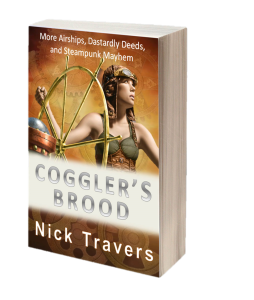 Coggler’s Brood
Coggler’s BroodShe’s back! With a mystery package to deliver, an atrocity to thwart, and a love interest in tow. Nina Swift immerses herself in Reaver culture to find the elusive Papa Doyle, cross swords with the Master Coggler, and deliver on a promise made to a dying Microtough agent.
More airships, more swashbuckling adventure, more dastardly villains, more Steampunk fun – it’s the return of the fabulous Nina Swift.
Publishing Winter 2015. You can read the story, here, week by week as the novel develops.
Yay! Nina is back:) And the cover is sooo gorgeous. Alki Nea




